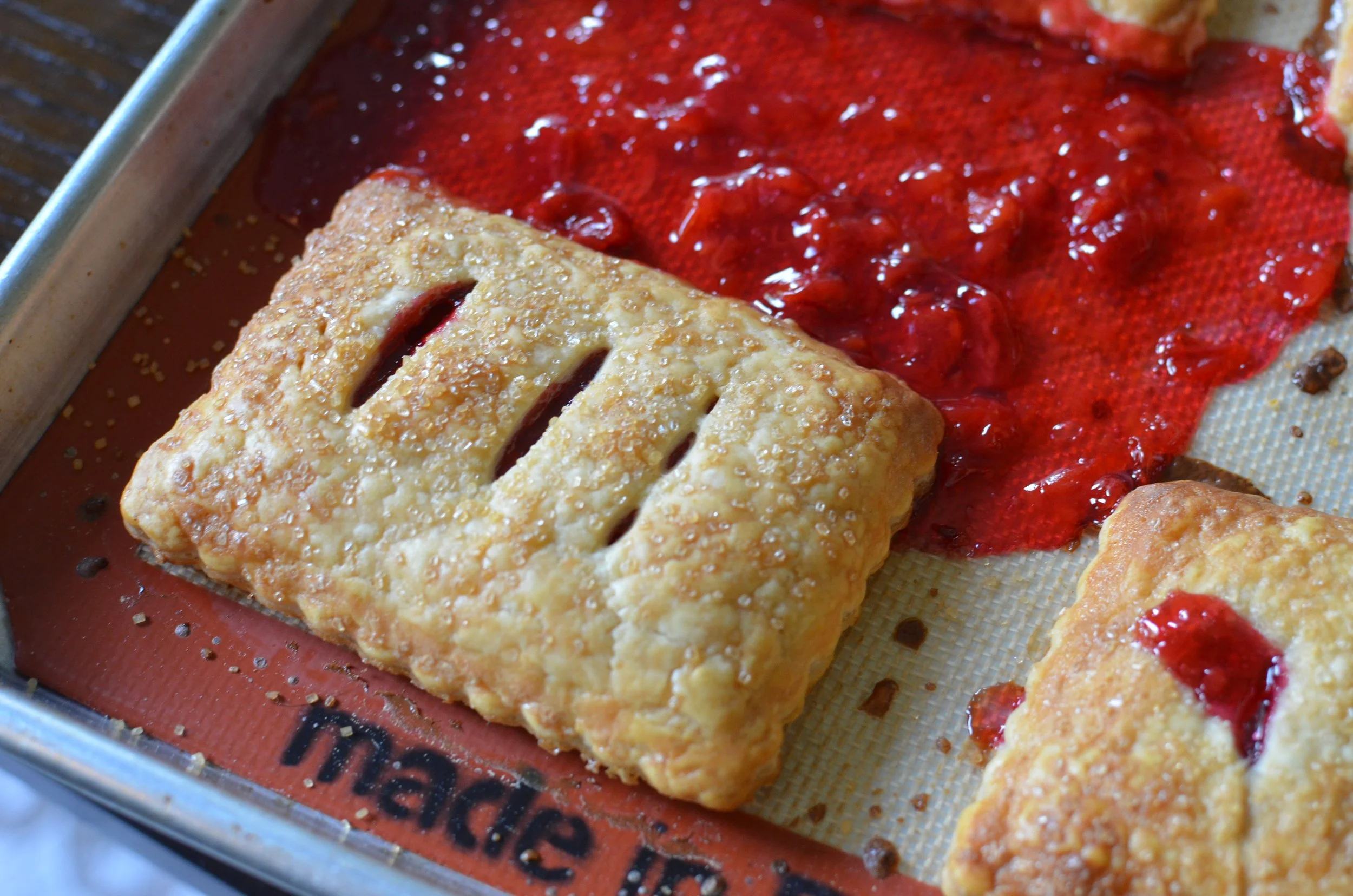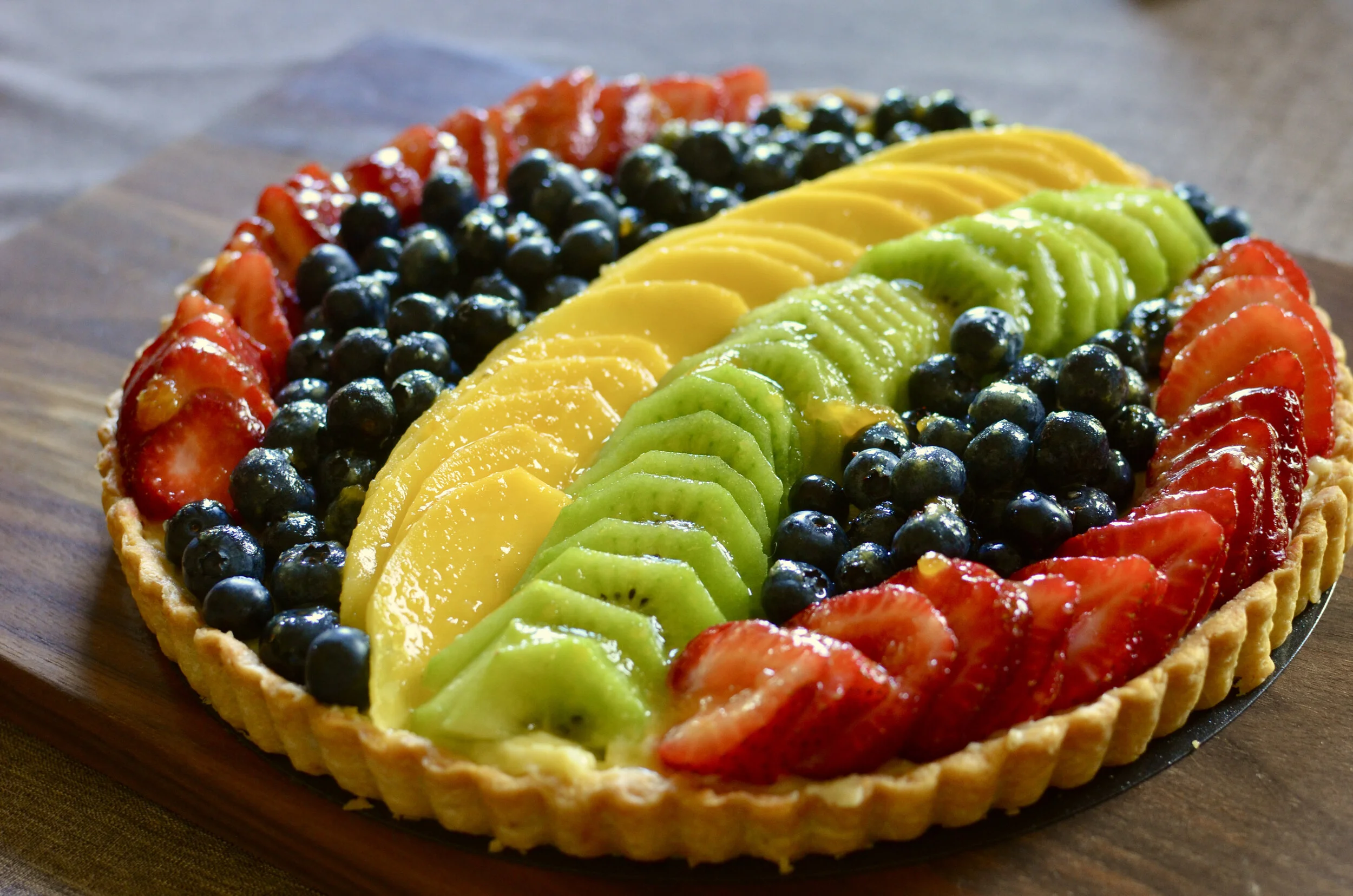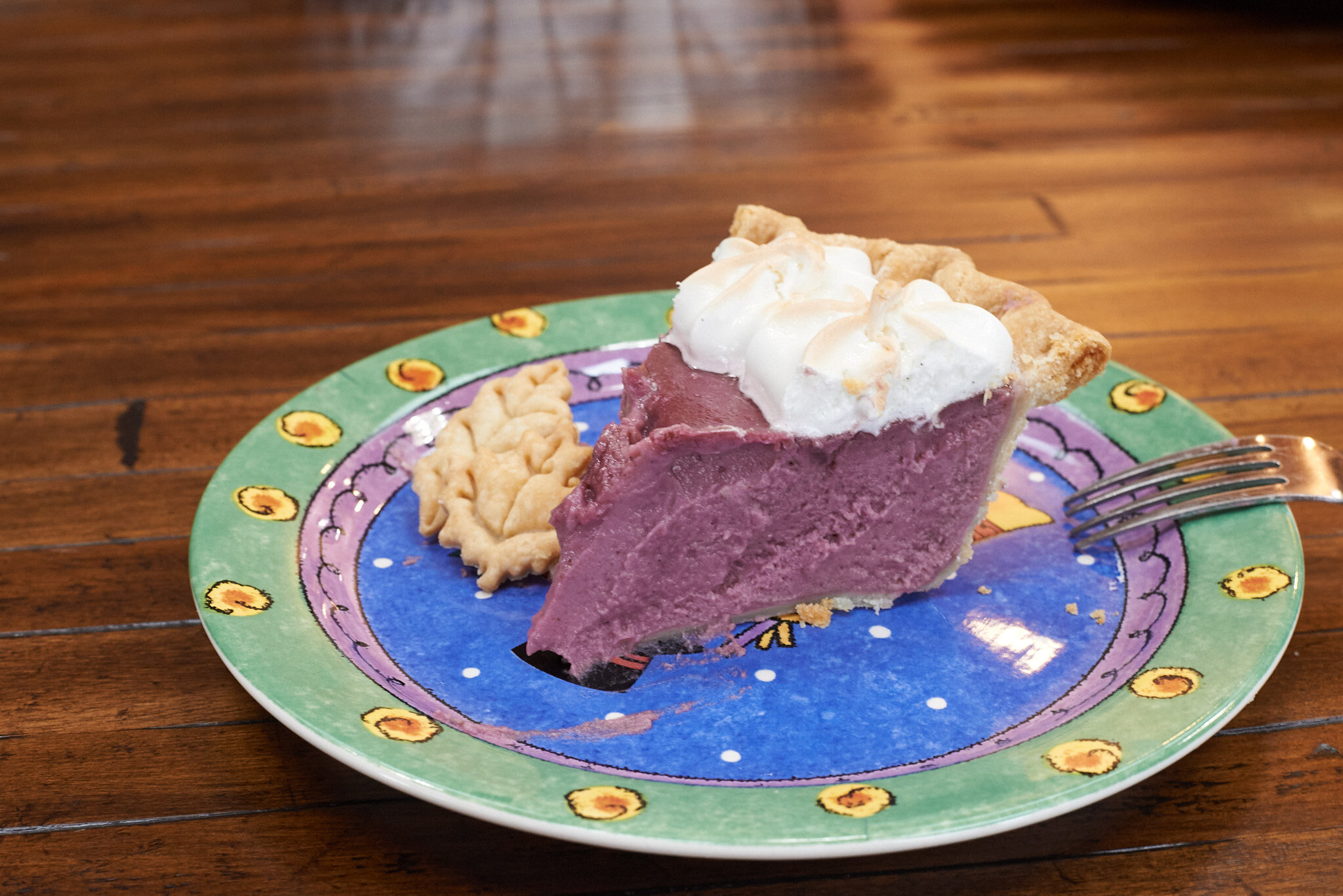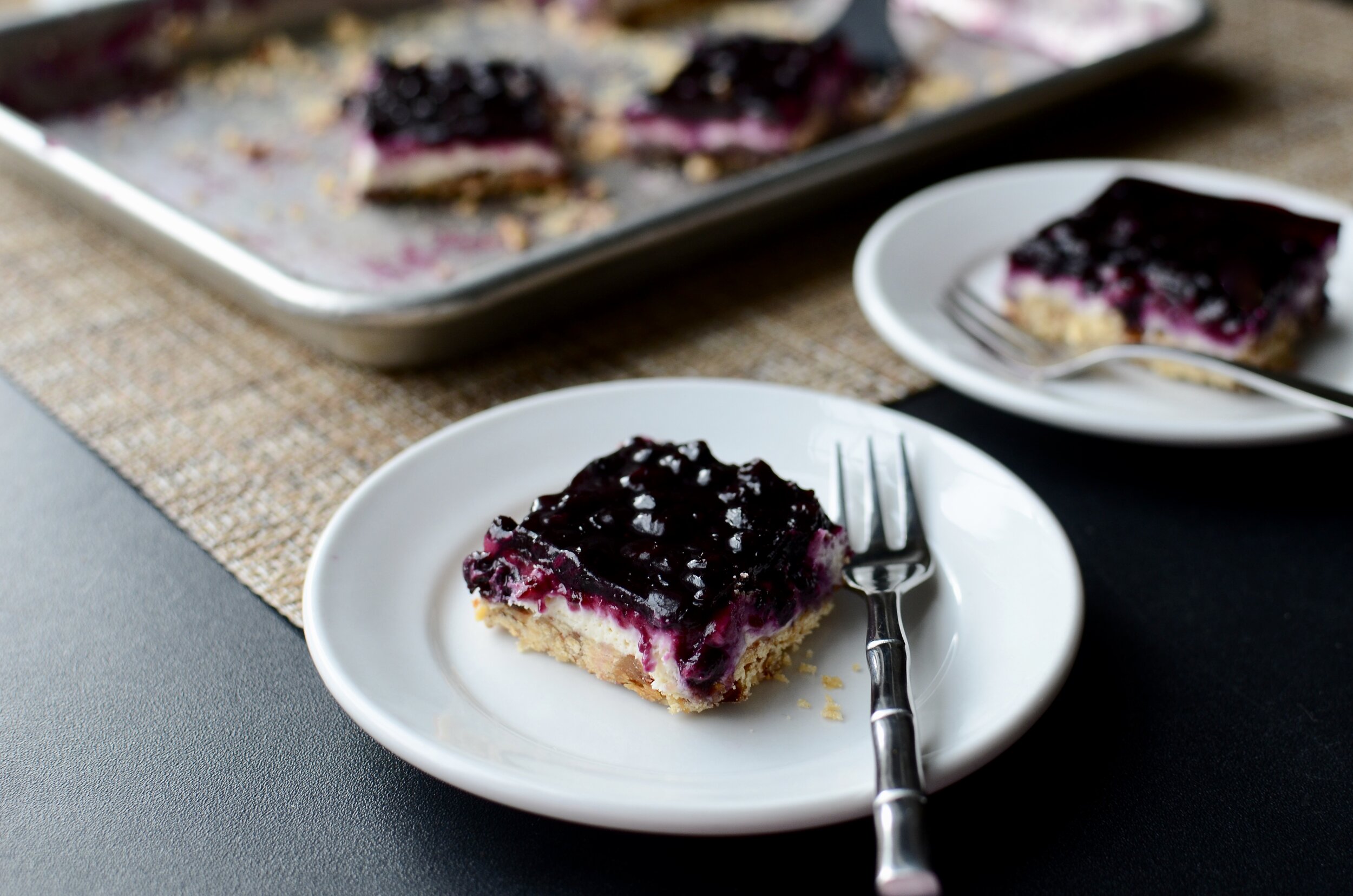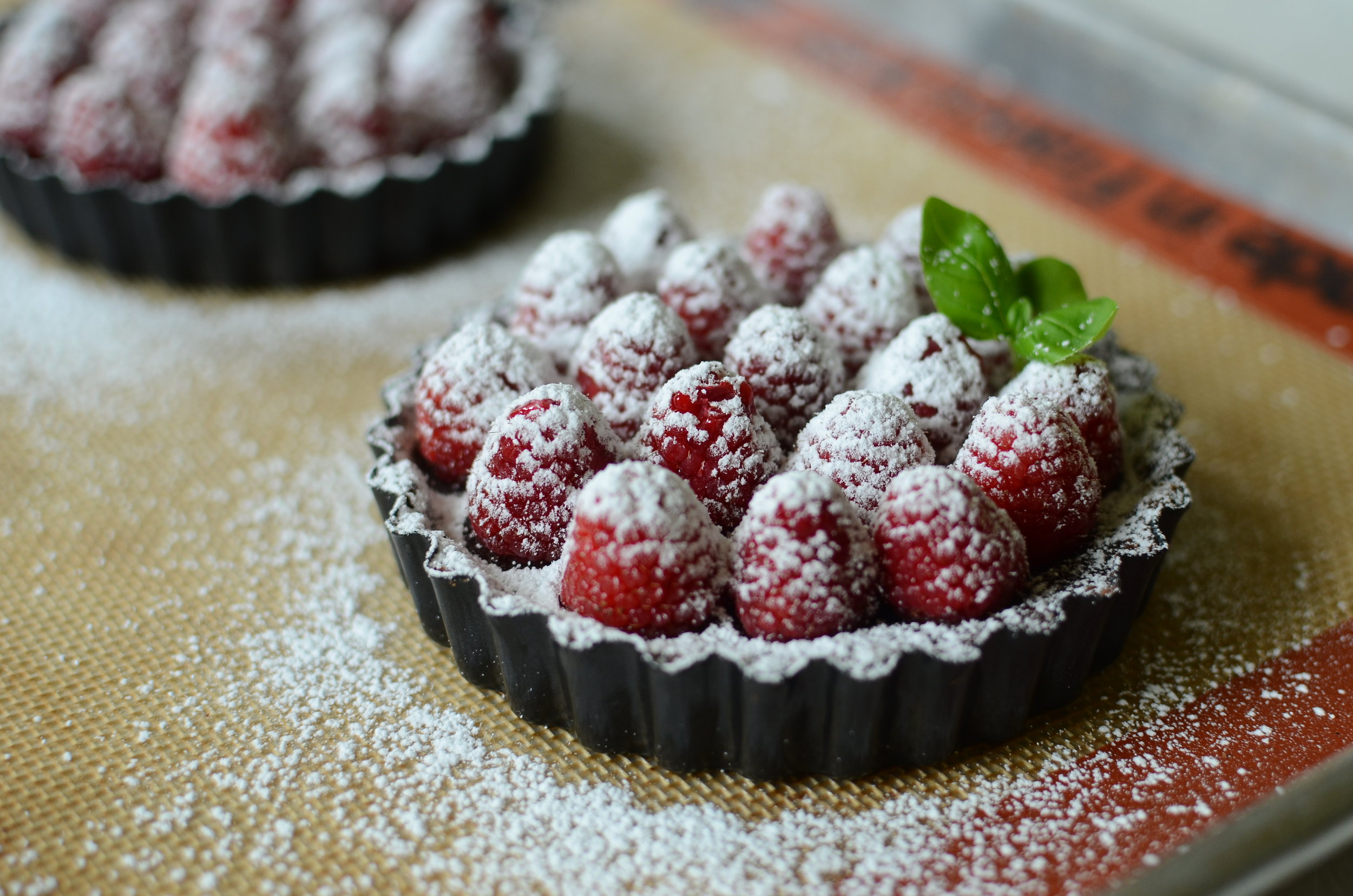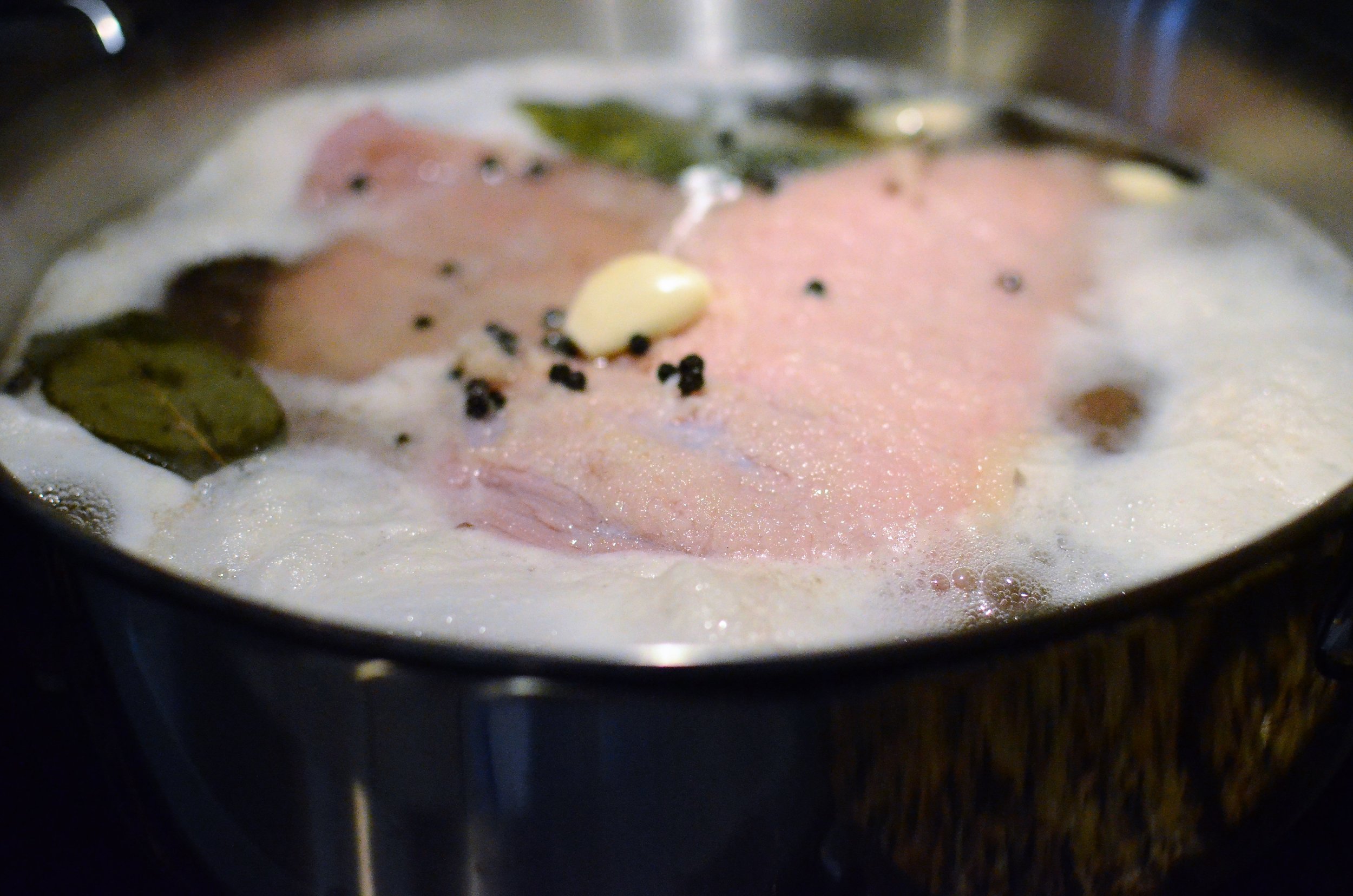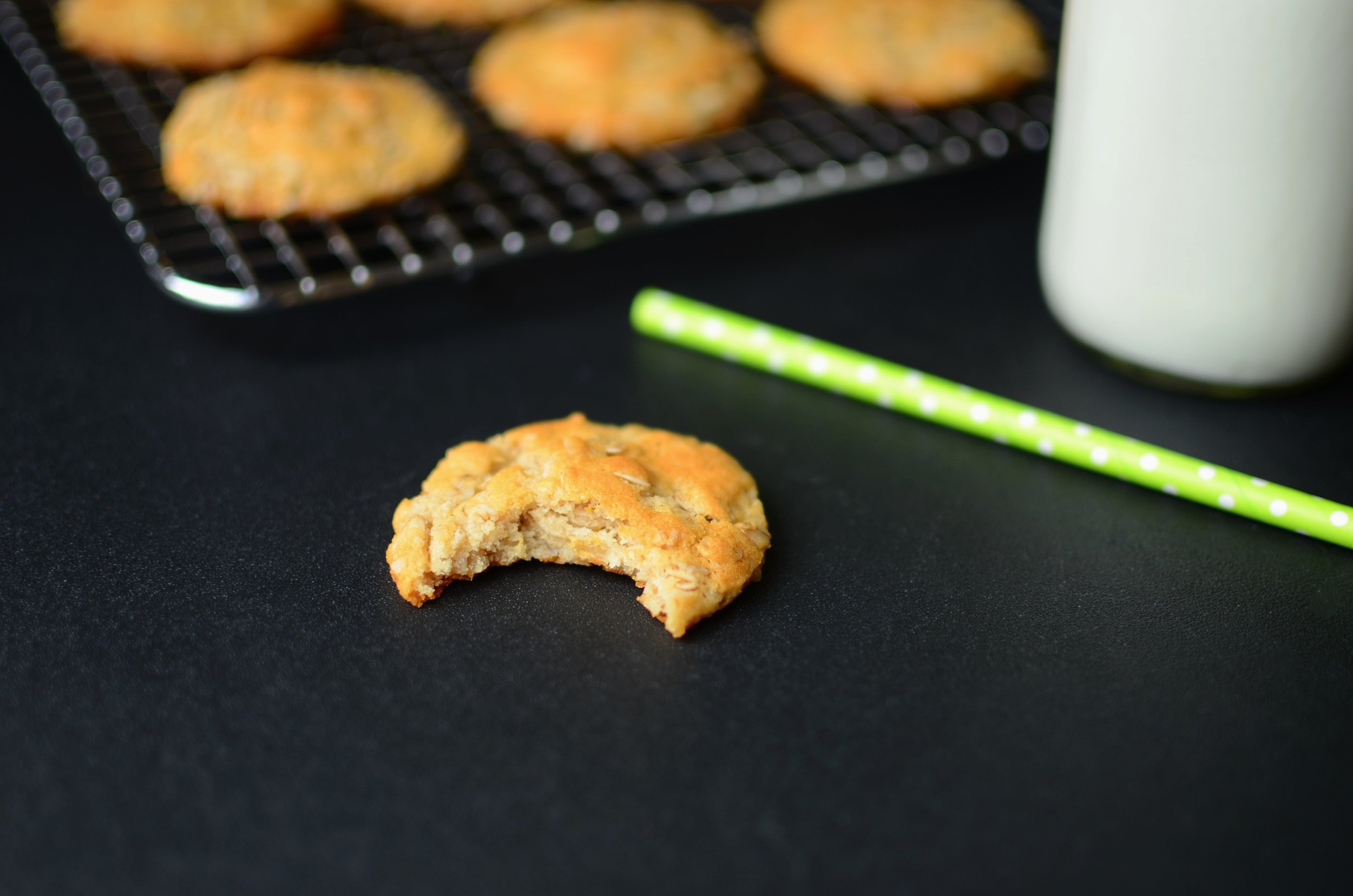Hot Water Apple Pie
Patricia @ ButterYum
Happy Pi Day (get it? 3.14). Alright, alright, all cheesiness aside, I know what you're thinking... Hot Water What??!!!! Yeah, that's what I thought when I first learned about this technique too, but I'm here to tell you the apples in my pie turned out great! Not mushy at all - firm, yet tender and absolutely packed full of pure apple flavor.
Typically when I make an apple pie, I'll use a mixture of 3 or 4 different apple varieties, but this technique calls for only 1. Additionally, the spices are kept to a minimum which really elevates the flavor or the fruit. Bottom line, if you think you'd like the flavor of golden delicious apples on steroids, it's safe to say this recipe and technique are for you.
Start with room temperature golden delicious apples - we're going to need about 4 pounds of peeled, sliced apples. Don't miss the room temperature part - it's important. We need to peel them - let me show you my nifty apple peeler.
How fun was that? I’m in love with how fast this gadget peels an apple! Sorry for the blurry video, but you get the idea.
Cut out the cores. I save mine for the girls, and by girls I mean the chickens at my local egg farm. They know my vehicle and come running every time I visit because they know they're going to get something I bring lots of fruit and veggie scraps for them to snack on. This week it'll be apple cores, cabbage, carrots, squash seeds, broccoli and cauliflower stems and leaves, some salad greens didn't get eaten, and empty egg shells.
Cut the apples into 1/4-inch slices. Using a really good knife helps (I love this one).
Heat 3 quarts of water (or cider) until it boils. If you use cider, save if after soaking the apples to drink later.
Pour the boiling water over the apples and soak for 10 minutes. If the apples are cold, they'll make the temperature of the liquid drop too much - it should remain between 140F and 160F during the 10-minute soak. This is the magic temperature range that allows the pectin in the apples to set, preventing them from totally breaking down into mush during the baking process. By the way, don't be alarmed if you hear the apples hissing in that hot liquid... you'll see a lot of tiny bubbles rise to the surface too.
The water is too hot to press the apples down by hand so I weighted them down with a plate. When 10 minutes are up, drain for another 10 minutes.
Then toss them with sugar, cinnamon, and cornstarch. There's only 1/4 teaspoon of cinnamon needed for 4 pounds of sliced apples... that's very little, but remember, I said the spices were kept to a minimum to allow that pure apply flavor shine.
Items used in this post:
(affiliate links)
nifty apple peeler https://amzn.to/3HNP7xG
digital kitchen thermometer https://amzn.to/3v3xTot
7-inch nakiri knife https://amzn.to/3sxBJ7Y
9-inch glass pie plate https://amzn.to/3DBme4p
9-inch ceramic pie plate https://amzn.to/3sUa5SZ
mini pie plates https://amzn.to/3oyFwjQ (recipe will make four 5-inch pies or eight 4-inch pies)
Hot Water Apple Pie
makes one 9-inch pie, four 5-inch pies, or six 4-inch pies
Ingredients
4 1/2 pounds golden delicious apples, peeled, cored, and cut into 1/4-inch slices (*see note below)
3 quarts water (or apple cider)
10 tablespoons granulated sugar
4 tablespoons cornstarch
1/4 teaspoon ground cinnamon (or more to taste)
1/4 teaspoon fine salt
2 tablespoons butter, cut into cubes
2 tablespoons milk or cream
turbinado sugar (or granulated sugar)
Directions
Preheat oven to 425F and place rack in bottom center position.
Bring water or apple cider to a boil and pour over apple slices; soak 10 minutes, then drain another 10 minutes.
Add sugar, cornstarch, cinnamon, and salt to the apples; mix well to combine.
Roll half the crust and line pie plate(s) as usual.
Pour the apples into the lined pie plate(s) and dot with butter cubes.
Roll remaining half of crust and top pie, crimp edges to seal and cut a few holes for ventilation.
Brush top crust with milk or cream and sprinkle liberally with turbinado sugar.
Place pie plate(s) on rimmed baking sheet and bake 55-60 minutes for a 9" pie, 40-45 minutes for 5" pies, or 30-35 minutes for 4" pies.
Note
The weight of the apples after peeling and coring should be just under 3 1/2 pounds.
adapted from Serious Eats










